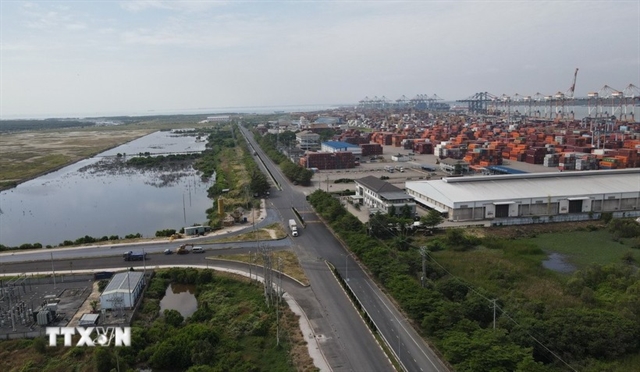 Environment
Environment

.jpg)
|
| 112 animals of 20 different species were released into the Bù Gia Mập National Park in southern Bình Phước Province after they were rescued at Củ Chi Wildlife Rescue Station. VNA/VNS Photo |
HÀ NỘI – Prime Minister Phạm Minh Chính has approved a plan to strengthen the prevention and punishment of wildlife and biodiversity crimes by 2030 with a vision to 2050.
The plan aims to create a drastic change in awareness and a sense of responsibility of agencies, organisations and individuals in observing the law on biodiversity, contributing to the conservation of ecosystems in Việt Nam.
Under Decision No1623/QD-TTg issued on Tuesday, Chính required changes in education on the protection and conservation of wild animals and plants, especially for people in protected areas, wetlands, migratory routes and those living near wild birds.
Biodiversity protection should be regularly educated in the mass media and at schools.
Staff who directly perform the work of preventing and combating crimes and violations of biodiversity and environmental law will be trained with knowledge and professional skills. Teams of appraisers and staff engaged in valuation work in this field will also be trained to meet the requirements of biodiversity crime prevention and control.
The plan also increases investment in necessary facilities, equipment, means and techniques for the prevention and combat of crimes and violations in biodiversity protection.
It focuses on investing in building a modern information inspection, analysis, and processing system to serve the prevention, detection and investigation of crimes in biodiversity protection.
The plan will complete a system of policies and laws on the prevention and control of crimes and violations in biodiversity protection, ensuring consistency, efficiency and conformity with relevant international treaties and agreements to which Việt Nam is a member.
The plan will be implemented nationwide. Agencies, organisations, households and individuals engaged in activities related to the management, conservation and use of endangered, precious and rare forest plants and animals are involved in the plan.
In order to achieve the goals, the decision outlines key solutions.
Agencies, organisations and individuals need to be disseminated legal documents to improve their awareness on biodiversity law; research and learn from international experiences on biodiversity conservation and management; promote social responsibility of enterprises in the management, conservation and sustainable use of biodiversity.
Reputable people in society and tour guides should be trained with knowledge and skills on biodiversity protection.
Ministries and branches will be required to review and supplement the implementation of legal documents on the handling of crimes and violations in biodiversity protection. They will be assigned to urgently develop regulations for inter-sectoral coordination in handling administrative violations on biodiversity before the fourth quarter of next year.
It is necessary to build an information processing centre and database on crimes and violations in biodiversity protection. A hotline will be set up to receive information on violations and crimes by 2030.
Relevant agencies should expand international cooperation in preventing and combating crimes in biodiversity protection with bordering countries, and ASEAN countries, strengthen negotiations and sign international treaties and agreements on crime related to trade in wild animals and plants.
Việt Nam is now home to 173 wildlife conservation zones, comprising 33 national parks, 66 nature reserves, and 18 species and habitat reserves. They cover a total area of more than 2.5 million hectares, which is expected to rise to over three million hectare by 2030. – VNS




